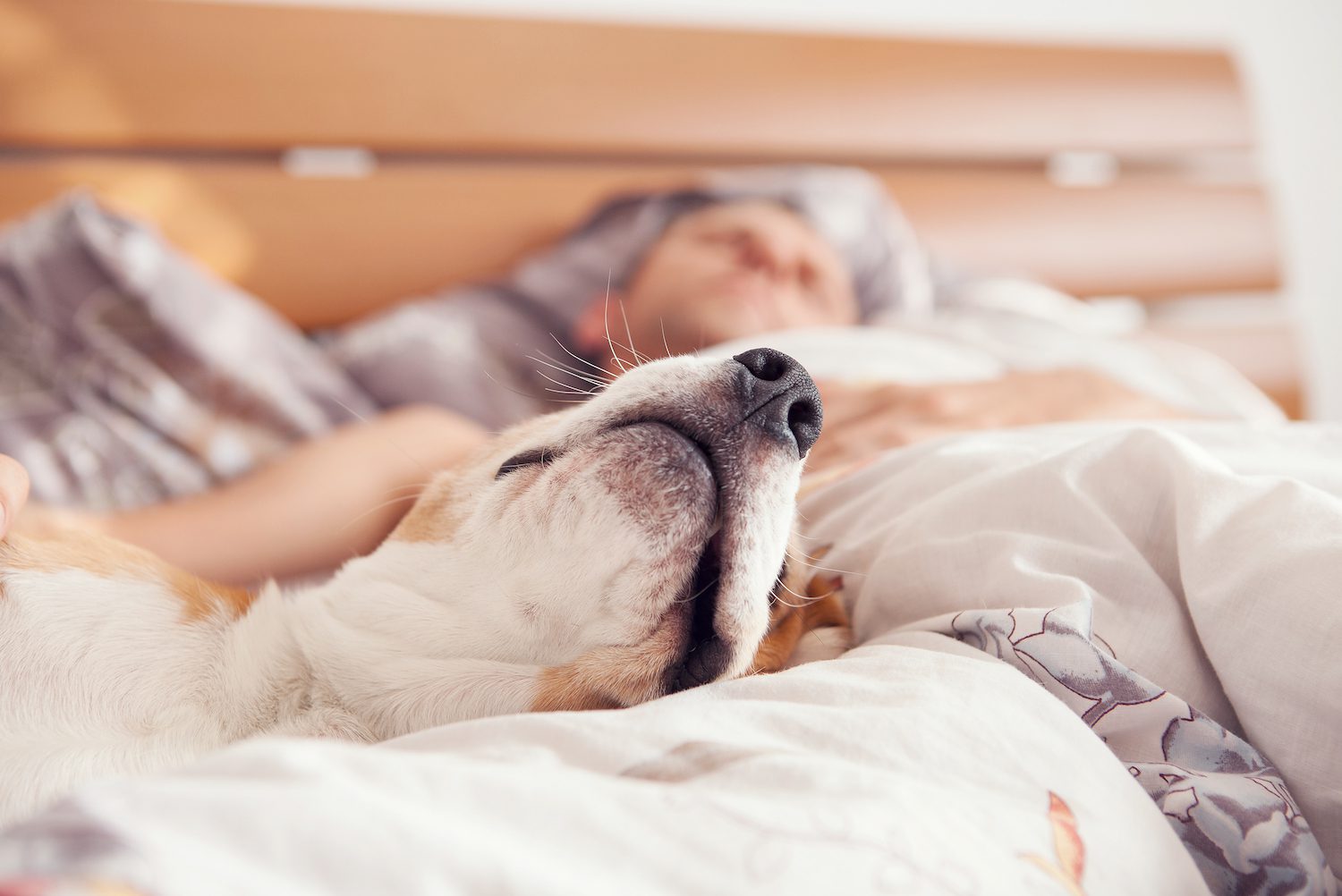Is It Safe to Sleep with Dogs and Cats?
Sharing your bed with pets is tempting. Dogs and cats offer warmth. They provide comfort and companionship. But is it safe? Many pet owners wonder this. This article explores the topic. We dive into benefits and risks. Health, hygiene, and behavior matter. Practical tips ensure safety. Let’s find out if co-sleeping works. Keep reading for clarity.

Benefits of Sleeping with Pets
Sleeping with pets boosts bonding. It strengthens your connection. Dogs and cats feel secure. You feel less lonely. Studies show reduced stress. Petting lowers blood pressure. Oxytocin release calms you. Pets help with anxiety. They ease depression symptoms. Co-sleeping mimics pack behavior. Dogs love closeness naturally. Cats enjoy warmth too. It improves sleep quality. For some, not all. Pets provide safety feelings. Like a furry alarm system. Insomnia sufferers benefit. Gentle snoring soothes them. Emotional support is key. Pets sense your mood. They cuddle during tough nights. This creates joyful moments.
Health Risks to Consider
Health concerns exist with co-sleeping. Allergies are a big issue. Pet dander triggers reactions. Sneezing or itchy eyes occur. Asthma can worsen too. Fleas and ticks spread. They carry diseases sometimes. Zoonotic diseases are rare. But bacteria like MRSA transfer. Salmonella from cats possible. Especially with litter box exposure. Parasites like worms spread. If pets aren’t dewormed. Scratches or bites happen. Even from playful pets. Sleep apnea patients beware. Pets disrupt breathing patterns. Immune-compromised people risk more. Consult doctors if vulnerable. Regular vet checks reduce risks. Vaccinations keep pets healthy.
Hygiene and Cleanliness Concerns
Hygiene is a major factor. Pets track dirt into bed. Muddy paws stain sheets. Shedding fur spreads everywhere. Litter box residue lingers. On cat paws especially. Regular baths help pets. Weekly bedding washes needed. Use hypoallergenic bedding. It reduces allergen buildup. Vacuum bedroom often. Remove pet hair daily. Flea prevention is critical. Monthly treatments work best. Brush pets before bed. This cuts loose fur. Clean paws after walks. Wet wipes are handy. Avoid feeding in bed. Crumbs attract pests. Good hygiene ensures safety. It protects you and pets.
Behavioral Impacts on Pets and Owners
Co-sleeping affects pet behavior. Dogs may become clingy. They expect bed access always. Cats might demand attention. Nighttime zooming disrupts sleep. Pets may guard bed. This causes aggression issues. Training prevents bad habits. Set boundaries early on. Owners lose sleep sometimes. Pets move or snore. Small beds worsen this. Large breeds take space. Sleep position matters too. Spooning pets feels cozy. But restricts your movement. Restless pets wake you. Establish consistent routines. This balances behavior. Pets learn bedtime rules. Owners stay well-rested.
Safety Tips for Co-Sleeping

Safety starts with preparation. Ensure pets are healthy. Regular vet visits confirm this. Update all vaccinations. Rabies shots are crucial. Deworm pets monthly. Flea and tick prevention too. Use pet-safe bedding. Wash it frequently. Choose breathable fabrics. Avoid heavy blankets. Pets overheat easily. Keep bedroom clean. Vacuum under furniture often. Train pets for bed. Teach “off” command early. Use pet stairs. For small or old pets. Prevent jumping injuries. Check for allergies first. Monitor your symptoms. Stop if reactions occur. Never force co-sleeping. Pets need choice too. Provide alternative beds. Crates or pet mats work.
Special Considerations for Dogs vs. Cats
Dogs and cats differ. Large dogs take more space. Small dogs cuddle better. Breeds like Bulldogs snore. This disturbs light sleepers. Hyper dogs need calming. Pre-bed walks help them. Cats are nocturnal often. They roam at night. Scratching posts prevent damage. Cats track litter less. But dander spreads easily. Kittens are more active. Older cats sleep deeper. Dogs need consistent training. Cats prefer routine too. Consider pet personality. Shy pets avoid beds. Social ones love it. Match habits to yours. This ensures harmony.
When to Avoid Sleeping with Pets
Some situations aren’t ideal. New pets need adjustment. They may mark territory. Sick pets spread germs. Avoid co-sleeping then. Aggressive pets pose risks. Bites or scratches hurt. Children in bed complicate things. Pets may react poorly. Allergies or asthma worsen. Stop co-sleeping immediately. Pregnancy demands caution too. Toxoplasmosis from cats risks harm. Consult doctors first. Sleep disorders like insomnia. Pets might aggravate them. Small beds cause overcrowding. Choose pet-free sleep then. Respect your comfort. And pet’s needs too.
Practical Alternatives to Bed Sharing
If co-sleeping isn’t safe, try options. Place pet bed nearby. Close to your bed works. Dogs love floor mats. Cats prefer elevated perches. Crates offer secure spaces. Add familiar blankets inside. Use calming pheromone diffusers. They mimic co-sleeping comfort. Train pets to stay off. Reward them for compliance. Create cozy pet zones. With toys and treats. Nighttime routines help. Walk dogs before bed. Play with cats too. This tires them out. Alternatives maintain closeness. Without health risks.
Conclusion
Sleeping with dogs or cats can be safe. It depends on preparation. Weigh benefits like bonding. Consider risks like allergies. Hygiene and training matter. Follow vet advice always. Keep pets healthy and clean. Use safety tips daily. Alternatives work if needed. Your sleep quality matters. So does pet comfort. Make informed choices. Enjoy furry cuddles responsibly. Share your bed wisely.

